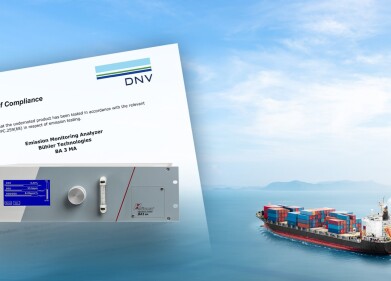Measurement and testing
What Does ASTM Mean for Petroleum?
Aug 19 2022
From calculating concentrations of elements such as sulphur and nickel to determining physical properties like viscosity, ASTM test methods are widely used across the oil and gas sector. Recognised around the world for accuracy, reliability and consistency, ASTM standards play an important role in regulating the industry.
What are ASTM test methods used for?
In a manual published by ASTM International, author R.A. Kishore Nadkarni lists hundreds of standard tests used to analyse and characterise petroleum products. This includes crude oil, as well as gasoline and other refined products.
ASTM International methods are also used to analyse biofuels, which have emerged as an efficient and eco-friendly alternative to traditional diesel fuel.
Blending biofuels with ASTM standards
In the United States, the ASTM D6751 Standard Specification for Biodiesel Fuel Blend Stock is used to analyse biodiesel fuel blend stocks. Once approved, they are blended with petroleum diesel and distillates to create biodiesel blends. This includes B2 (containing 2% biodiesel), B5 (containing 5% biodiesel) and B20 (containing 20% biodiesel).
As a domestically produced product, biodiesel increases energy security and funnels profits back into the US economy. The US Department of Energy also labels biodiesel as a “clean-burning, renewable substitute for petroleum diesel.”
According to the US Energy Information Administration, there are currently around 75 biodiesel production facilities in the United States. Together, they produce around 2.4 billion gallons of biodiesel per year. Facilities use the ASTM D6751 to analyse biodiesel produced onsite and ensure it meets the strict specifications needed to create biodiesel blends.
The role of ASTM in scientific research
Accuracy, reliability and validity form the backbone of scientific research. For findings to be considered genuine, scientists must ensure research methods meet these benchmarks. In the scientific realm, ASTM methods are used to standardise research and ensure results are as accurate, reliable and valid as possible.
In an article published in the journal Scientific Reports, the authors explain how they relied on ASTM test methods to analyse biofuel derived from fish oil. Standardised methods were used to analyse the properties of conventional diesel and biodiesel blends containing fish oil. Properties analysed included emissions, kinematic viscosity, flash point, combustion parameters and overall performance. The team found that biodiesel blends containing fish oil were more efficient and has lower carbon emissions.
Want to know more about some of the different ASTM methods used to analyse oil? We cover some of the most useful methods, including the ASTM D5185-18 to detect elements such as calcium, sulphur and zinc and the ASTM D2887-19ae2 to calculate boiling range distribution, in ‘Petroleum Testing - A Comprehensive Guide’. Or check out 'Recent advances in testing the lubricity of diesel fuel' for a more in-depth look at lubricity testing in particular.
Digital Edition
PIN 26.1 Feb/Mar 2025
March 2025
Analytical Instrumentation - Elemental Analysis for Quality and Process Control at Refineries, for Lubricants and Wear Metals in Engine Oils - Synthetic Lubricants: New Developments - Scaling...
View all digital editions
Events
Apr 08 2025 Birmingham, UK
Apr 08 2025 Kielce, Poland
Apr 08 2025 Ravenna, Italy
Apr 08 2025 Southampton, UK
Apr 08 2025 London, UK



















